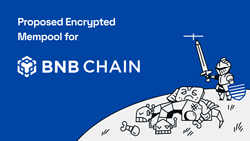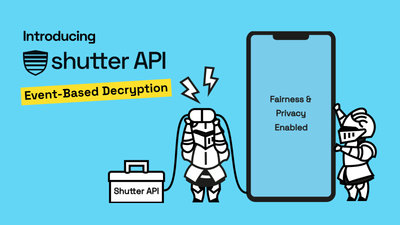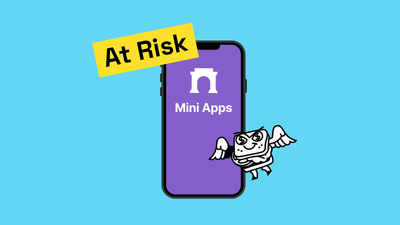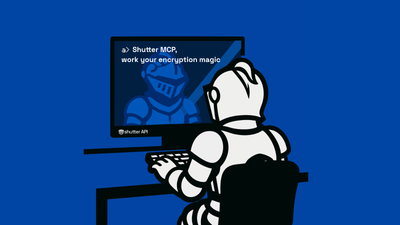Ethereum’s dApp Crisis: Rigged NFT and Token Launches, Web3 Gaming and Betting Exploits
Many of the riskiest dApps on Ethereum today share the same fatal flaw: they rely on a broken and unprotected transaction system. Whether it's NFT drops, token launches, Web3 games, or betting platforms, unprotected dApps are getting hijacked by bots, insiders, and high-rollers. The result? A few players reap the reward, while regular users are left with failed transactions, wasted gas, and lost funds. Commit-reveal protection can fix this by making transaction execution fairer for everyone.
One of the most urgent examples of this problem is high-volatility, low-liquidity token trading—where front running and sandwich attacks quietly drain value from unsuspecting traders. We’ll be covering that category in its own deep-dive article in the next couple of weeks.
In this piece, we’re focusing on three other major dApp verticals that are equally vulnerable—and just as in need of commit-reveal protection:
- NFT and Token Launches
- Web3 Betting: Prediction Markets & On-Chain Betting
- Web3 Gaming: Transparency and RNG
1. Token and NFT Launches are Front Runner’s Dream
Token sale launchpads (IDOs, ICOs, and public auctions) and NFT minting events are among the most easily exploited activities on Ethereum. The combination of a transparent mempool, gas-priority-based transaction ordering, and flawed or overly transparent distribution mechanisms creates an ideal environment for bots and privileged actors to gain an unfair advantage. This often results in sniping, gas wars, and Sybil attacks that distort fair distribution and undermine user trust.
NFT Trait Sniping – In one of the most well-known examples of trait sniping and randomness exploit. Larva Labs’ $85M Meebits NFT launch was exploited by a user who abused the transparency of on-chain metadata to mint a rare NFT valued at approximately $700,000. The Meebits contract stored a zip file on IPFS that publicly revealed each token’s traits by ID. The attacker used this visibility to identify ultra-rare tokens and then repeatedly minted and cancelled transactions (“rerolling”) until the random assignment gave them the desired token ID. Hundreds of mint attempts were auto-cancelled whenever the outcome wasn’t the rare one, and finally a favorable mint succeeded, netting the attacker an extremely valuable NFT. In general, trait sniping like this could be prevented with a commit-reveal encryption scheme. By keeping NFT traits or randomness encrypted until after the minting phase, users would be unable to see which traits their NFT would receive ahead of time. Everyone would be forced to mint “blind,” ensuring fairness.

Bot Sniping and Gas Wars on DEXs – Token launches on major DEXs regularly see sniper bots abuse Ethereum’s transparency. For instance, during various hyped ERC-20 token releases in 2023–2024, bots monitored the mempool for liquidity-add transactions and then automatically front-ran human buyers. By getting the first buy in, the bot acquires the new token at a cheap initial price and immediately sells it back to latecomers at an inflated price. This abuse left regular users either buying at much higher prices or failing their transactions due to rapid price swings. It’s understood that sniper bots often capture the majority share of tokens in such launches. Without protections, many “public sales” on DEXs turn into a race that normal users simply cannot win.
2. Web3 Betting is a Rigged Paradise: Exploited Prediction Markets & On-Chain Betting
Web3 betting dApps suffer from predictable wagering patterns, publicly visible bets, and exploitable randomness mechanisms. Without encryption, attackers can adjust their bets based on real-time data, exploit protocol vulnerabilities, and rig the odds in their favor.
Polymarket Oracle Controversy – Integrity Questions Raised Over Oracle Voting
A controversial outcome in a Polymarket prediction market has raised fresh concerns about oracle governance and manipulation risks in decentralized systems. A market asking whether Donald Trump would strike a mineral deal with Ukraine was resolved as "Yes"—despite no such deal being signed—after a high-stakes vote on the UMA oracle protocol. The deciding vote came from an Ethereum wallet, BornTooLate.eth, who had quietly accumulated over 1.3 million UMA tokens, granting significant voting power over oracle disputes.
While some in the UMA community maintain that the protocol worked as designed, others argue the resolution was factually incorrect and swayed by disproportionate influence—sparking concern around "governance attacks” in which a whale from the UMA Protocol can use voting power to manipulate the oracle.
One possible mitigation? Commit-reveal encryption. If UMA oracle votes had been encrypted until a coordinated reveal phase, it would have added uncertainty around the final vote tally—making it harder for any one party to confidently game the outcome. This uncertainty disrupts possible manipulation since voters can’t know if their influence will be decisive. By hiding votes until a reveal phase, commit-reveal systems also reduce the risk of collusion and herd behavior—offering a potential path to restore confidence in oracle-based prediction markets.

Lazarus and Other Coordinated Attackers – No discussion of crypto exploits is complete without mentioning the Lazarus Group, North Korea’s state-backed hacking collective. Lazarus typically uses social engineering and key theft, but some of their headline exploits hit betting and gaming platforms – exactly the targets in question. In September 2023, Lazarus stole ~$41 million from the crypto casino and sportsbook Stake.com. While this particular attack was a wallet compromise (not a gameplay manipulation), it underscores the high stakes for Web3 betting platforms. A commit–reveal system like Shutter can’t stop a stolen key, but it could mitigate certain attacks Lazarus might employ – such as front running transactions if they had insider access. Lazarus is already widely known for using MEV attacks on their own trades to “transfer” funders across addresses. By encrypting transactions (withdrawals, bets, etc.) until they are finalized, even a hacker lurking in the system can’t easily redirect funds or alter bets without detection.

3. Web3 Gaming Manipulation: Transparency and RNG Exploits in Blockchain Games
Web3 games rely on on-chain randomness and metadata visibility, both of which can be manipulated by technically savvy players. Attackers exploit predictable random number generation (RNG) or access metadata leaks before the official reveal, tilting the playing field unfairly.
Pancake Swap Lottery Exploit – Binance Smart Chain’s PancakeSwap had an on-chain lottery where winning numbers were derived from predictable on-chain data. In 2021 an exploiter (allegedly a dev acting as white-hat) precomputed the results and drained about $1.8 million from the prize pool. Projects use things like block headers, transaction hashes, and more to create legitimate sources of randomness, but none are truly random – they are merely pseudorandom. Commit–reveal or threshold-encrypted randomness would have made it impossible to know the winning numbers in advance, preventing such manipulation.

ZKasino –Delayed Randomness Refund Exploit – ZKasino, a decentralized betting platform (offering games like a coin flip, dice, etc.), disclosed a critical RNG-related vulnerability in 2023. The game relied on an oracle (a third-party service) to supply random numbers for fair outcomes. However, a glitch in this randomness delivery created an opening for savvy players. If the oracle’s callback was delayed beyond a certain time (200 blocks), a player could front run the result with a refund transaction, effectively canceling any bet that was going to lose. In practice, this meant cheaters could get refunds on losing bets while keeping winnings – ensuring they “always win.” The exploit involved monitoring pending randomness and timing a refund if the outcome looked unfavorable. ZKasino acknowledged the issue (found by a white-hat hacker) and patched it in a security update. The case shows how, even when using reputed RNG oracles, improper handling of delayed responses can let attackers manipulate game outcomes. certik.com
Chainlink VRF Bug – Skewing “Provably Fair” Randomness – In 2023, a high-profile RNG vulnerability was revealed in Chainlink’s Verifiable Random Function (VRF) – a service used by many blockchain games (including popular ones like Axie Infinity and Aavegotchi) for “provably fair” random numbers. White-hat hackers discovered that a malicious VRF subscription owner could abuse the system by blocking the randomness request and repeatedly re-rolling until a desired value came up. In essence, a game developer (or an attacker who compromised the subscription owner account) had the power to discard unfavorable random outcomes and only accept the favorable ones, defeating the fairness of the RNG. Chainlink categorized this as a critical flaw since it could undermine any on-chain game or lottery using VRF. Fortunately, the issue was caught before being exploited in the wild – Chainlink paid a $300,000 bounty to the researchers and quickly implemented a fix to prevent this manipulation. This incident was covered widely due to Chainlink’s prominence and served as a cautionary tale that even “trusted” randomness systems require vigilant security checks. cryptoslate.com
How Shutter API Can Fix These Issues and Bring Privacy to Any dApp
The above incidents vividly illustrate a need for privacy and information symmetry on Ethereum dApps. Fortunately, a new solution, Shutter API, has emerged to tackle the problems highlighted above, and its current early adopter chains and dApps include Gnosis Chain and Snapshot.
Shutter API uses decentralized threshold encryption to create “sealed” transactions and reveal them only after they’re irrevocably included on-chain. This means all participants have the same information at the same time - no one, including a centralized controlling entity, can see inside the data envelope ahead of others. This decentralized approach provides stronger protection against potential corruption or manipulation. As a result, Shutter API enables a wide range of exciting use cases for Web3 that were previously impractical or impossible.
In practice, this means:
- Sealed-Bid NFT Auctions & Token Sales: With Shutter API, NFT mints and token launches can be conducted as sealed-bid auctions where all buy transactions are encrypted until a predefined deadline. Because no participant can see others’ bids in the mempool, bots lose their advantage—they cannot front-run or adjust strategy based on real-time activity. If users are bidding variable amounts (e.g., how much they’re willing to pay), there's no need for gas wars—everyone competes on value, not speed. All bids are decrypted and executed together after the deadline, ensuring a fair, simultaneous reveal. If the sale uses a fixed price model, Shutter can still mitigate spam and real-time sniping by batching and revealing all purchase intents at once, instead of processing them sequentially. This reduces the incentive to spam the mempool or overpay for gas, because bots can no longer adapt their behavior based on mempool visibility. In both cases, the result is a smoother, fairer launch: significantly reduced chances of trait sniping, fewer failed transactions, less wasted ETH, and much harder for bots to game the system with high gas bids.
- Fair Prediction Markets & On-chain Betting: Encrypted commitments can ensure that all wagers in a prediction market are locked in without anyone seeing how others are betting until it’s too late to manipulate. Shutter’s “sealed envelope” approach means a betting dApp could take in encrypted bets and only decrypt them when the event starts or the pool closes. It also enables parimutuel betting, such as sports pools, where odds aren’t skewed by whoever bets last since all bets are revealed simultaneously. In on-chain casinos, using Shutter’s encrypted randomness (or combining it with a VRF) means the random seed for a dice roll could be hidden until the bet is committed, stopping the “predict-and-profit” strategy cold.
- Fair On-Chain Gaming: Perhaps most exciting for Web3 game developers, Shutter API makes it possible to have hidden states and moves in games. For instance, a strategy game on Ethereum could let players submit their moves in encrypted form so that no opponent can anticipate their actions by reading the blockchain in real-time. The moves would all decrypt and execute together, ensuring simultaneity and fairness. This opens the door to complex games (think poker, mafia, even diplomacy) where on-chain play was previously impossible because everyone could see your hand or strategy. Moreover, NFT mints with random traits can use commit-reveal schemes via Shutter – mint first, reveal traits only after all mints are done – so that nobody can know what they’ll get (and thus no one can selectively mint or cancel for rare items). Essentially, Shutter API brings the element of surprise back to Ethereum.
Bringing Commit-Reveal Protection to Your dApp: Integrate Shutter API
Ethereum dApp developers should strongly consider integrating such cryptographic protection if they want to avoid the fiascos we highlighted.
The Shutter Network’s API is immediately available for projects to plug in, offering an easy toolkit for encryption without needing trusted servers or complex custom code. By using Shutter API, developers can ensure fairness and privacy by design.
- Schedule Shutter API demo with the Shutter team
- Start implementing Shutter API today using the Quick Start guide











